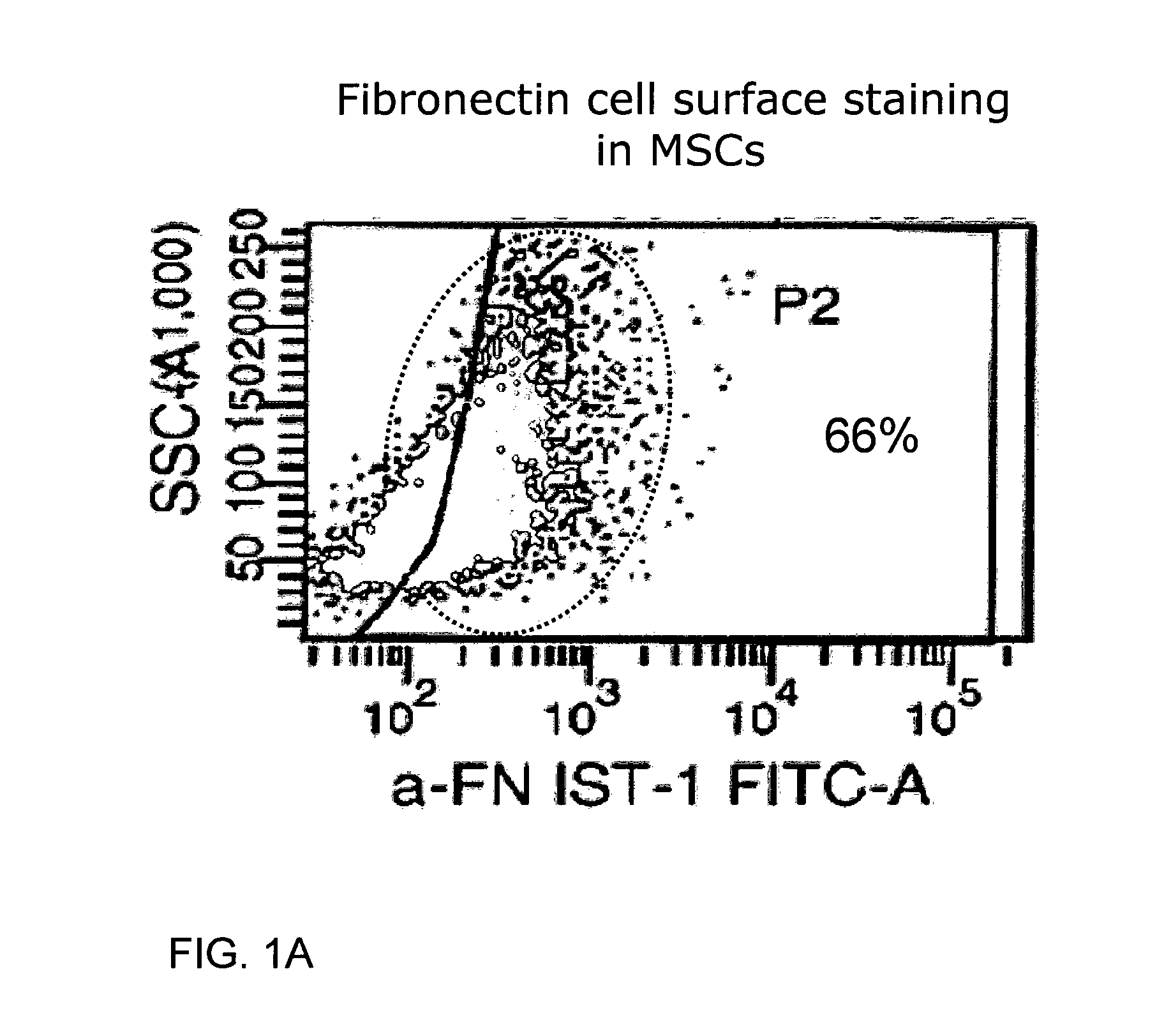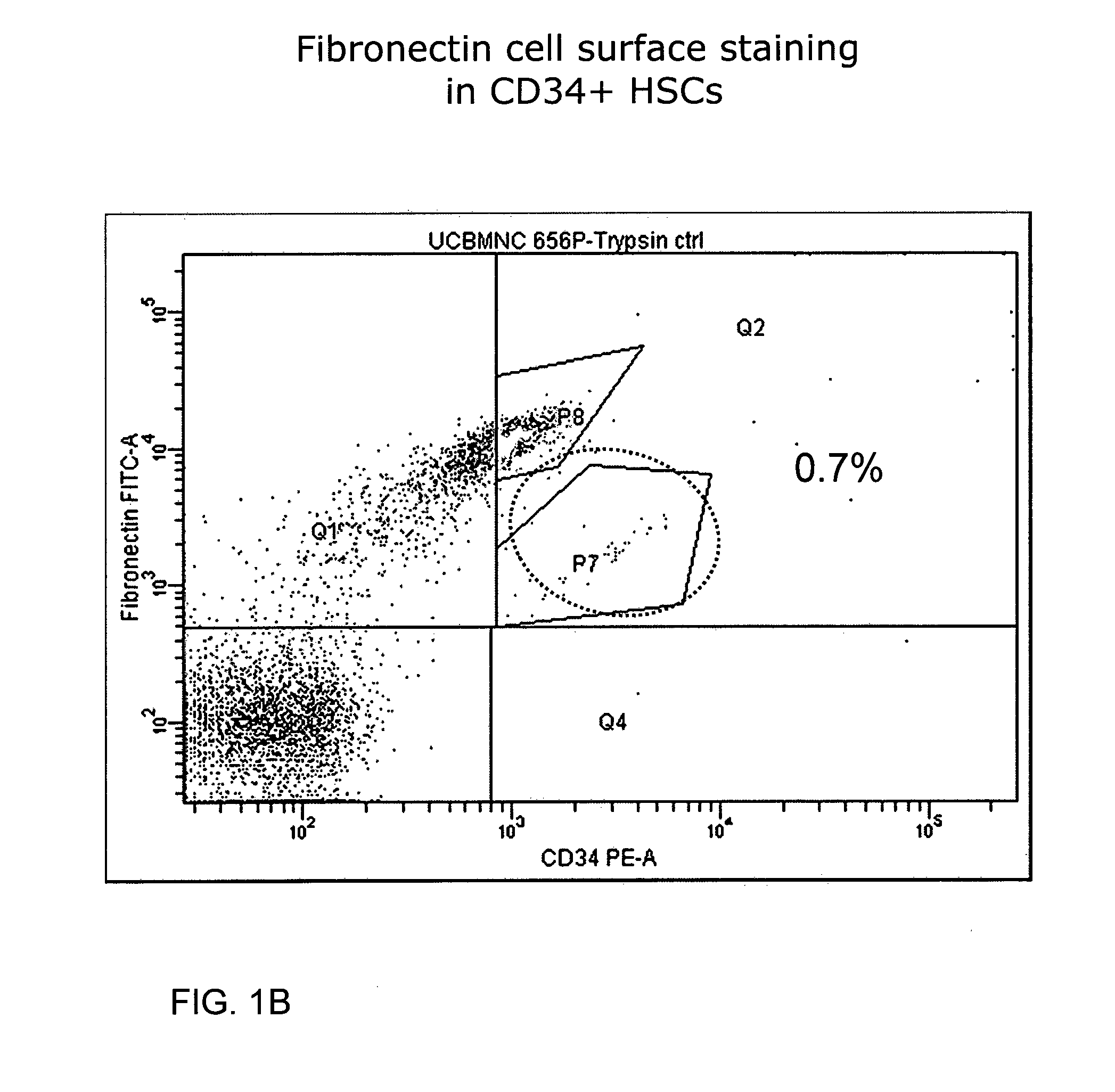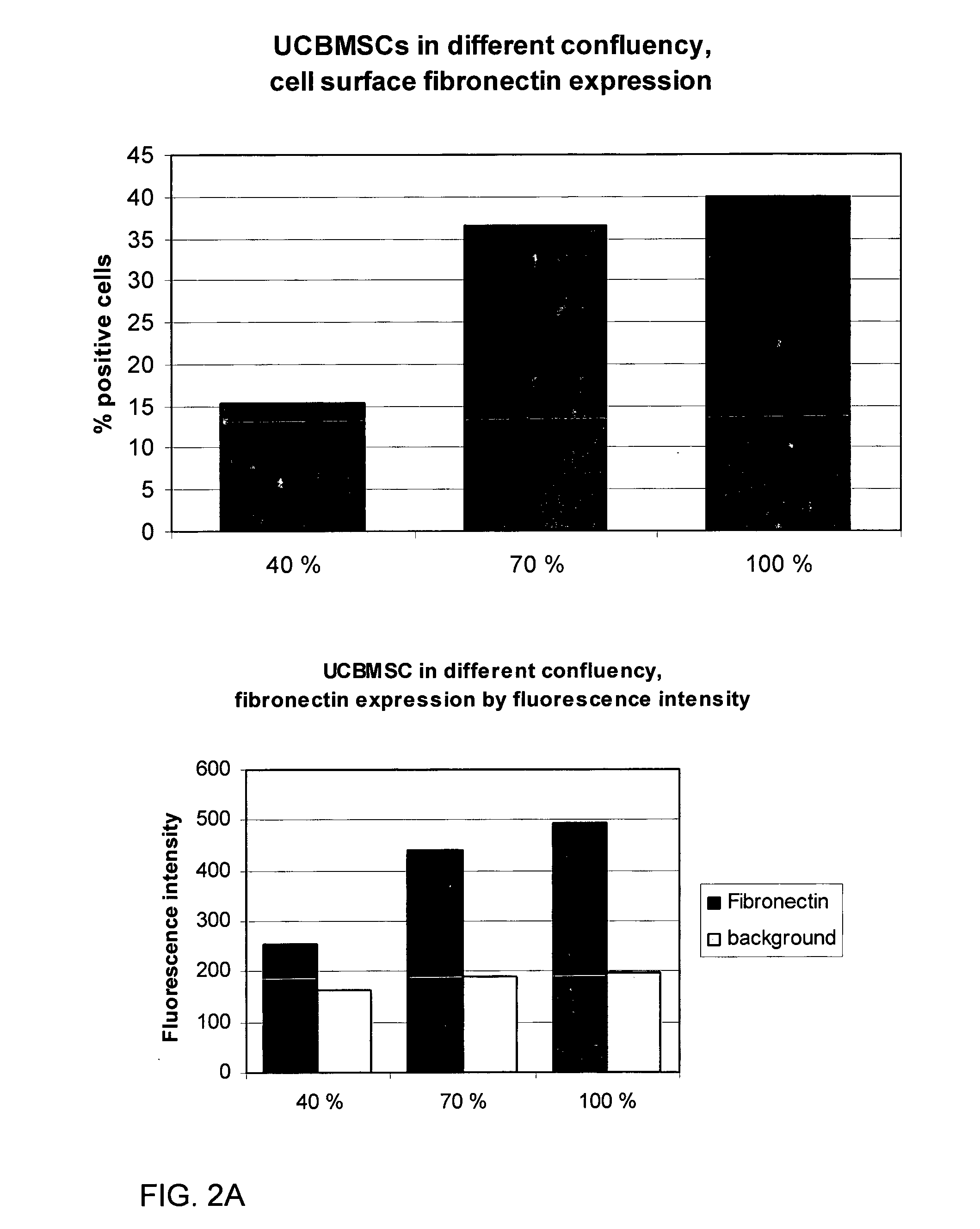Use of a Proteolytic Enzyme for the Modification of the Cell Surface of a Stem Cell
a technology of stem cell and proteolytic enzyme, which is applied in the field of stem cell cell cell cell cell cell surface modification by proteolytic enzyme, can solve the problems of unwanted transplantation of cells and higher clinical complications, and achieve the effect of hindering and/or preventing the transition of stem cells
- Summary
- Abstract
- Description
- Claims
- Application Information
AI Technical Summary
Benefits of technology
Problems solved by technology
Method used
Image
Examples
example 1
Materials and Methods
[0065]Umbilical cord blood-derived mesenchymal stem cell (UCBMSC) 594P in p2, UCBMSC 454T(7) in p4 and Ficoll-isolated UCB-derived mononuclear cells (MNCs) were used in the experiments. The adherent MSCs were detached in 70-100% confluency with trypsin (TryPLe Express, Invitrogen) and the trypsinization was stopped within 4 minutes with excess culture media. The cells were labelled for flow cytometric analysis with 2 μl of the anti-fibronectin antibody (#ab6327, abcam, FIG. 17) and PE-conjugated anti-CD34 antibody (#130-081-002, Miltenyi Biotec) per 1×10e5 cells in PBS w / Ca & Mg pH 7.2+0.5% bovine serum albumin (BSA) for 30 minutes on ice. After washing with excess labelling buffer, secondary antibody staining was done with Alexa 488-conjugated goat-anti mouse IgG (H+L) diluted 1:500. The labelled cells were run with a FACSAria (BD) flow cytometer and the results were analyzed with the FACSDiva software (BD).
Results
[0066]MSCs: The UCBMSCs were concluded to be c...
example 2
Materials and Methods
[0069]Confluency Experiments:
[0070]Umbilical cord blood-derived mesenchymal stem cell (UCBMSC) 454T(7) in p6 were used in the confluency experiments. The cells were plated in different densities to yield different levels of confluency on the same analysis day. The MSCs were analyzed at 40%, 70% and 100% confluency and were simultaneously detached with trypsin (TryPLe Express, Invitrogen). The trypsinization was stopped within 4 minutes with excess culture media. The cells were labelled for flow cytometric analysis with 2 μl of the anti-fibronectin antibody (#ab6327, abcam) per 1×10e5 cells in PBS w / Ca & Mg pH 7.2+0.5% bovine serum albumin (BSA; ultrapure, Sigma) for 30 minutes on ice. After washing with excess labelling buffer, secondary antibody staining was done with Alexa 488-conjugated goat-anti mouse IgG (H+L) diluted 1:500. The labelled cells were run with a FACSAria (BD) flow cytometer and the results were analyzed with the FACSDiva software (BD).
[0071]Su...
example 3
Materials and Methods
[0074]Pediatric human bone marrow-derived mesenchymal stem cell (BMMSC) line M2 in passage 6 was used for the study. The subconfluent cells were detached with either trypsin (TryPLE Express, Invitrogen) or 0.5% pronase in PBS-0.5 mM EDTA. Detachment was stopped after 4 minutes by adding excess culture media. Viability was determined by trypan blue exclusion. The mitochondrial inner potential was measured with the JC-1label (Molecular Probes, Invitrogen) and flow cytometry.
Results
[0075]As compared to trypsin, the pronase detachment protocol (maximum concentration tested 0.5% pronase in PBS-EDTA) was as fast as the trypsin detachment protocol. Pronase detachment produced very viable, one-cell MSC suspensions without any cell aggregates. The cells had >95% viability (equal to trypsin) as determined by Trypan blue exclusion. Pronase-detached cells exhibited a better mitochondrial inner potential as studied with the JC-1 label as compared to trypsinized cells (see F...
PUM
 Login to View More
Login to View More Abstract
Description
Claims
Application Information
 Login to View More
Login to View More - R&D
- Intellectual Property
- Life Sciences
- Materials
- Tech Scout
- Unparalleled Data Quality
- Higher Quality Content
- 60% Fewer Hallucinations
Browse by: Latest US Patents, China's latest patents, Technical Efficacy Thesaurus, Application Domain, Technology Topic, Popular Technical Reports.
© 2025 PatSnap. All rights reserved.Legal|Privacy policy|Modern Slavery Act Transparency Statement|Sitemap|About US| Contact US: help@patsnap.com



